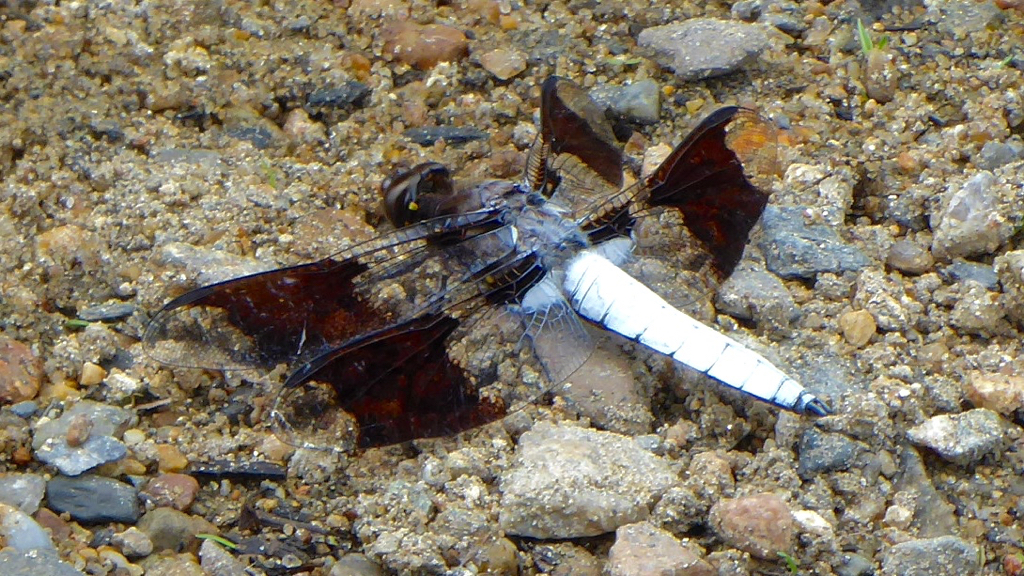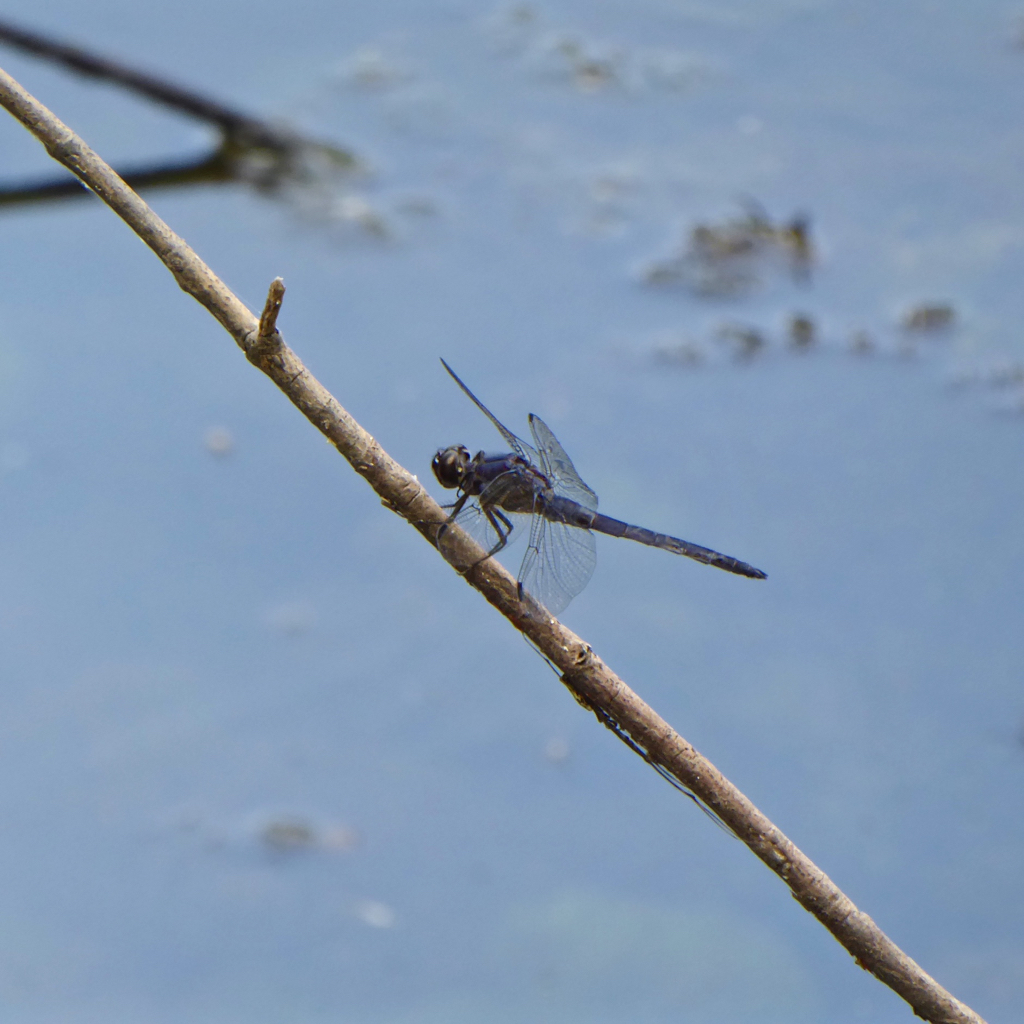In among the errands I had to run today, I managed to find time around noon to take a walk at the Concord unit of Great Meadows National Wildlife Refuge. It was hot and humid with a light breeze (8-11 mph), enough wind to keep the temperature bearable. The breeze and the time of day meant the birds were keeping under cover, so I spent half an hour looking at damselflies and dragonflies (Odonates).
I managed to get close enough to photograph three species reasonably clearly. As I tried to identify those species from photographs, I got introduced to the chalenges of Odonata identification. One species was easy to identify:
The above photograph shows a Common Whitetail (Libellula [Plathemis] lydia), in the Skimmer family (Libellulidae). This was a straightforward identification. According to Blair Nikula et al., A Field Guide to the Dragonflies and Damselflies of Massachusetts, “identification of most species [of Skimmers] is possible in the field based on a combination of body, eye, and wing color and pattern.” And this is a particularly distinctive species.
The next taxon, however, was more difficult. Based on the photo below, I’m willing to place this individual in the genus Enallagma, the Bluets. But I’m not willing to make any determination as to species: “The bluets (Enallagma) … are very difficult to identify without examining the male terminal appendages under a hand lens or loupe” (Nikula et al., p. 31). That would mean capturing the insect with a net, holding it the hand, and examining it; I don’t have an insect net, and, not being particularly coordinated, I’d worry about damaging the insect while trying to examine it.
The next taxon, shown below, was even more difficult. All I’m willing to say is that this individual is in the family Corduliidae, or Emeralds. To take the identification to the level of species, once again I would have needed to capture the insect. According to Nikula et al., “although genera can often be recognized in the field with experience, identification as to species is very difficult, typically requiring in-hand examination of subtle body markings, male terminal appendages, or the female subgenital plate.” I’ll be happy if I ever get good enough to identify the Emeralds to the level of genus.
At this point, I don’t feel the need to make specific identifications of every individual; it’s enough for me to appreciate the unexpected diversity of the Odonates.
Published a day later than the date on the post, due to travel.



